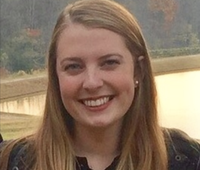Who Was the Real Edith Pretty From Netflix's 'The Dig'?
She initiated one of the most significant archeological digs of the 20th century.

Netflix's period pieces have been on point as of late—see: Bridgerton, The Queen's Gambit—and the streamer's newest addition to the genre is no different. The Dig, a drama film released Jan. 29, is set in the English countryside during World War II, and tells the true story of the groundbreaking (pun very much intended) archeological dig that would come to be known as Sutton Hoo. During the excavation, led by Basil Brown (played in the film by Ralph Fiennes), archeologists discovered multiple Anglo-Saxon burial sites dating back to the sixth and seventh centuries, including a remarkably well-preserved and undisturbed ship burial containing hundreds of artifacts widely considered to be among the most important in British history.
Perhaps most crucial to the success of the dig (and The Dig) was the owner of the land, Edith Pretty, a wealthy widow played in the film by Carey Mulligan. Curious about the strange mounds dotting her property, Pretty asked Brown to see what he could uncover, and the rest was history. Here's everything you need to know about Edith Pretty's incredible life.
She was a lifelong explorer.
Born Edith Dempster in 1883, Pretty and her family traveled extensively throughout her childhood, thanks to her father and grandfather's immense success as manufacturers of gas industry equipment. Before she was even out of her teens, Pretty had visited Egypt, Greece, India, the U.S., and more, and spent six months living in Paris, according to her journals. Later, during the first World War, she volunteered for the Red Cross in England and France.
As Mulligan herself put it to British Vogue, all of Pretty's travels and life experiences serve as "a real eye-opener" in contrast to the traditional way of life for women of Pretty's time. "Reading her biography, I was just so in awe of her. She was so extraordinary," Mulligan said. "She served as a volunteer nurse in the First World War, and she traveled to Egypt and America, and lived in Paris for six months on her own. This was kind of revolutionary stuff for a woman in the time that she grew up in. I loved the idea of somebody with that capacity for learning, study, and adventure."
After her parents died, Pretty and her sister inherited an estate worth approximately $22 million today. She married soldier Frank Pretty in 1926, then purchased the more than 500-acre Sutton Hoo estate. They welcomed their only child, son Robert, in 1930, only a few years before Frank's 1934 death.
She was the one to call for an excavation on her property.
Pretty had observed archeological digs throughout her travels, and had a front-row seat to one at her parents' home, Vale Royal Abbey. In the early 20th century, Pretty's father organized an excavation on the property to uncover the original medieval abbey located on the property.
According to the British Museum, those experiences, coupled with her spending much of her time at home due to her worsening health and grief over her husband's death, led her to focus on solving the mystery of the 18 large and clearly man-made mounds of earth located across her estate. Pretty tapped Brown, a local amateur archeologist, to start digging in 1937. As Brown's findings were revealed to be hugely historically significant, the British government took over, sending in teams of professionals to continue the dig.
Get exclusive access to fashion and beauty trends, hot-off-the-press celebrity news, and more.

"She was sort of imprisoned by her place in society and by her responsibilities and by her fragile health ... but essentially she sort of had a vision that there was something in those mounds that needed to be uncovered, because there was something underneath there," Mulligan told British Vogue. "I thought that was so amazing, because this was somebody who clearly wanted to reclaim that part of her life that she'd had when she was younger, a sort of adventuress, traveler, and discoverer."
She was determined to give credit where it was due.
Despite her high status and mind-boggling wealth, Pretty was truly a woman of the people. For one thing, after it was determined in 1939 that all of the priceless artifacts found on her land were rightfully her property, she immediately chose to donate everything to the British Museum. As a reward for her status as one of the museum's most generous donors of all time, then-Prime Minister Winston Churchill offered her the prestigious CBE honor, but she graciously declined.
Additionally, upon bequeathing the medieval treasures to the museum, Pretty requested that Brown receive credit for his work on the initial dig. Unfortunately, by the time World War II was over and the findings were able to be exhibited for the first time—nearly a decade after Pretty's 1942 death—Brown's name was left off the exhibit, likely because he was self-taught and not a part of the nation's more prestigious class of professional archeologists. As The Dig notes, it wasn't until very recently, long after Brown's 1977 death, that the museum righted this wrong and added Brown's name to the permanent Sutton Hoo exhibit alongside Pretty's.
Andrea Park is a freelance writer for Marie Claire, where she writes mainly about pop culture, drawing on her lifelong obsessions with consuming every book, movie, and TV show she can get her hands on. Andrea is based in Chicago and graduated from Northwestern University's Medill School of Journalism and Columbia University's Graduate School of Journalism. Her byline has also appeared in W, Glamour, Teen Vogue, PEOPLE, and more.
